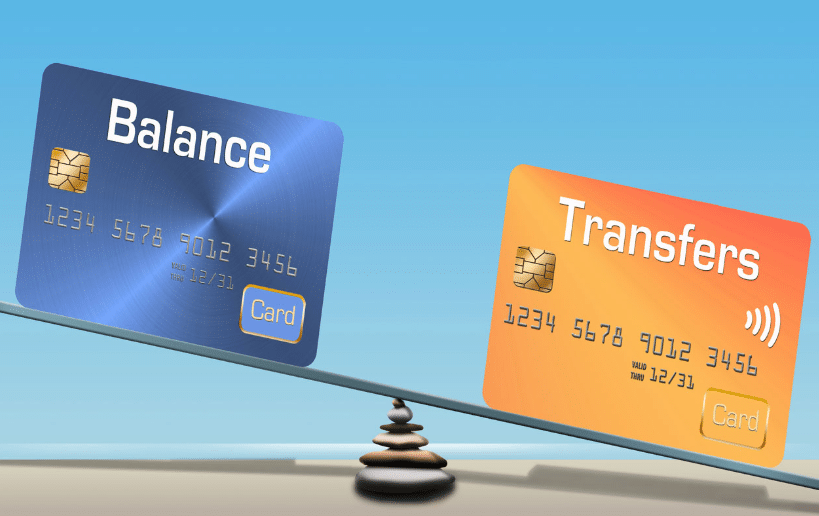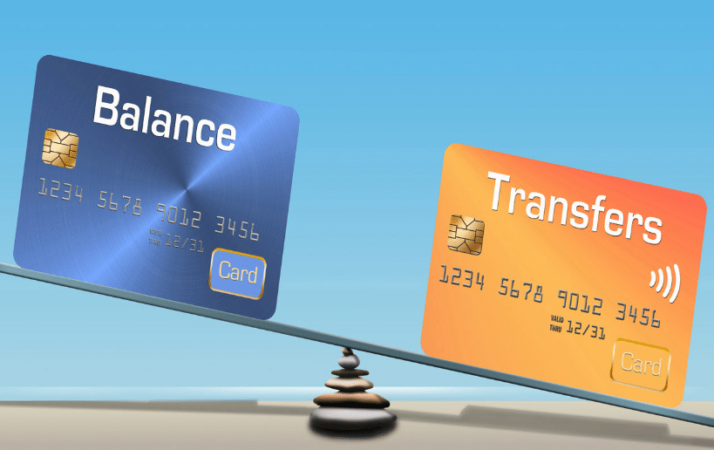
Credit card no fee for balance transfer offers a tempting solution to high-interest debt. These cards allow you to transfer existing balances from other credit cards to a new one, often with a 0% introductory APR. This can save you money on interest charges and help you pay off your debt faster. However, it’s crucial to understand the nuances of “no fee” balance transfers before jumping in. While the term “no fee” might sound appealing, there are often hidden costs and conditions that can impact your savings.
This guide delves into the world of credit card balance transfers, exploring the benefits, drawbacks, and factors to consider when choosing a “no fee” balance transfer card. We’ll also provide tips on how to maximize your chances of success and avoid common pitfalls.
Introduction to Balance Transfers
Balance transfers involve moving outstanding debt from one credit card to another, often to a card with a lower interest rate. This strategy can be beneficial for consumers looking to reduce their overall interest payments and manage debt more effectively.
Balance transfers are particularly advantageous when consumers are burdened with high-interest credit card debt. By transferring the balance to a card with a lower interest rate, individuals can significantly reduce their monthly interest payments, freeing up more money for other expenses.
Benefits of Balance Transfers
Balance transfers can offer several advantages to consumers, including:
- Lower Interest Rates: Transferring a balance to a card with a lower interest rate can save you a considerable amount of money on interest charges over time.
- Debt Consolidation: Balance transfers can help you consolidate multiple credit card balances into a single account, simplifying debt management and potentially improving your credit score.
- 0% Introductory APR: Many balance transfer cards offer an introductory period with 0% APR, allowing you to pay down your debt without accruing interest during that time.
Examples of Situations Where Balance Transfers Are Advantageous
Balance transfers can be particularly beneficial in the following scenarios:
- High-Interest Debt: If you have a credit card with a high APR, transferring the balance to a card with a lower rate can save you substantial interest charges.
- Multiple Credit Cards: Consolidating multiple credit card balances into a single account can simplify debt management and improve your credit score.
- Unexpected Expenses: If you’ve incurred unexpected expenses and need to consolidate debt to improve your cash flow, a balance transfer can be a helpful strategy.
Understanding “No Fee” Balance Transfers
When you’re looking to consolidate debt and save money on interest, balance transfers can be a tempting option. Credit card companies often advertise “no fee” balance transfers, which can seem like a great deal. However, it’s crucial to understand what “no fee” actually means in this context, as there might be hidden fees or conditions you need to be aware of.
Types of Fees Associated with Balance Transfers
It’s important to understand that even if a credit card advertises “no fee” balance transfers, there might be other fees associated with the process. These fees can vary depending on the credit card issuer, so it’s essential to read the fine print carefully. Here are some common types of fees:
- Balance Transfer Fee: This is a percentage of the amount you transfer, typically ranging from 1% to 3%. While advertised as “no fee,” this fee may be applied after an introductory period, so it’s essential to be aware of this timeframe.
- Foreign Transaction Fee: If you’re transferring a balance from a foreign credit card, you might incur a foreign transaction fee, usually a percentage of the amount transferred.
- Late Payment Fee: If you miss a payment on your balance transfer, you might be charged a late payment fee, which can add up over time.
- Over-the-Limit Fee: If you exceed your credit limit after the balance transfer, you may be charged an over-the-limit fee.
Comparison of “No Fee” and Fee-Based Balance Transfers
- “No Fee” Balance Transfers: These transfers often come with an introductory period where you can transfer your balance without paying a fee. However, as mentioned earlier, a balance transfer fee may be applied after this introductory period. Additionally, you might still be subject to other fees like foreign transaction fees, late payment fees, or over-the-limit fees.
- Fee-Based Balance Transfers: These transfers typically involve a one-time fee, usually a percentage of the amount you transfer. This fee is often clearly stated in the credit card agreement. However, these transfers may offer lower interest rates or longer introductory periods compared to “no fee” transfers.
Factors to Consider When Choosing a “No Fee” Balance Transfer Card

While “no fee” balance transfer cards offer an enticing way to save money on transferring debt, it’s crucial to consider several factors before making a decision. These factors can significantly impact your overall savings and help you choose the best card for your specific needs.
Understanding APR and Introductory Periods
The Annual Percentage Rate (APR) is the interest rate charged on your outstanding balance. It’s a critical factor to consider, as it directly impacts the cost of your debt. “No fee” balance transfer cards often come with an introductory APR, typically 0% for a specific period. This period can range from a few months to a year or more. It’s essential to understand the duration of the introductory period and the standard APR that applies after it ends.
- Example: A card offering 0% APR for 18 months might seem appealing, but if the standard APR after that period is 20%, you could end up paying significantly more interest if you don’t pay off the balance within the introductory period.
Balance Transfer Fees, Credit card no fee for balance transfer
While the card might advertise “no fee” for balance transfers, there could be other fees associated with the process. These fees might include:
- Transfer fee: Some cards charge a percentage of the transferred balance as a transfer fee. This fee could offset the benefits of the “no fee” offer.
- Annual fee: Some cards charge an annual fee, which could negate the savings from the “no fee” balance transfer.
Impact of Credit Score and Credit History
Your credit score and credit history play a crucial role in determining your eligibility for “no fee” balance transfer cards. Credit card issuers typically prefer applicants with good credit scores, as they are considered less risky.
- Credit score: A higher credit score generally improves your chances of getting approved for a card with favorable terms, including a “no fee” balance transfer offer.
- Credit history: A history of responsible credit management, including timely payments and low credit utilization, can enhance your eligibility for such cards.
Benefits and Drawbacks of “No Fee” Balance Transfer Cards: Credit Card No Fee For Balance Transfer
While “no fee” balance transfer cards seem appealing, they have their advantages and disadvantages. Understanding these aspects is crucial before making a decision.
Advantages of “No Fee” Balance Transfer Cards
A “no fee” balance transfer card can be advantageous for managing debt.
- Lower Interest Rates: These cards often offer lower interest rates compared to your existing cards, allowing you to save on interest charges and pay off your debt faster.
- Zero Balance Transfer Fees: This eliminates the upfront cost associated with transferring your balance, making it more affordable.
- Longer Grace Period: Some “no fee” balance transfer cards provide a longer grace period before interest starts accruing on the transferred balance, giving you more time to pay it off.
Disadvantages of “No Fee” Balance Transfer Cards
However, there are potential drawbacks to consider.
- Introductory Period: The lower interest rate on balance transfers is usually temporary, typically lasting for a specific period, such as 6 to 18 months. After this period, the interest rate may revert to a higher standard rate, potentially increasing your debt burden.
- Balance Transfer Limits: Most “no fee” balance transfer cards have limits on the amount you can transfer, which may not cover your entire debt.
- Credit Score Impact: Applying for a new card can temporarily lower your credit score, especially if you have multiple recent applications.
- Potential for Overspending: Having access to a new credit line can lead to overspending if not managed responsibly.
Risks Associated with Using Balance Transfers
While “no fee” balance transfer cards can be helpful, it’s important to be aware of potential risks.
- High Interest Rates After Introductory Period: If you don’t pay off the transferred balance before the introductory period ends, you’ll face higher interest rates, potentially increasing your debt.
- Fees and Penalties: Some “no fee” balance transfer cards may have hidden fees or penalties, such as annual fees or late payment fees.
- Impact on Credit Utilization: A large balance transfer can significantly increase your credit utilization ratio, which can negatively affect your credit score.
Impact on Credit Utilization and Overall Credit Health
A high credit utilization ratio can impact your credit score negatively.
- Credit Utilization Ratio: This is the percentage of your available credit that you’re using. A high utilization ratio (over 30%) can lower your credit score.
- Impact on Credit Score: A lower credit score can make it harder to get approved for loans, credit cards, or other financial products, and you may face higher interest rates.
- Responsible Management: It’s essential to manage your credit responsibly by keeping your utilization ratio low and paying your bills on time.
Strategies for Maximizing “No Fee” Balance Transfers
A “no fee” balance transfer can be a valuable tool for reducing debt, but only if you use it strategically. This section Artikels strategies for maximizing the benefits of these cards and ensuring a successful debt reduction journey.
Applying for and Using a “No Fee” Balance Transfer Card
Applying for a “no fee” balance transfer card is a straightforward process. Here’s a step-by-step guide to help you navigate the application and utilization effectively:
- Compare “No Fee” Balance Transfer Cards: Start by researching and comparing various “no fee” balance transfer cards. Consider factors like the introductory 0% APR period, transfer fees, annual fees, and eligibility requirements.
- Check Your Credit Score: Before applying, review your credit score. A good credit score increases your chances of approval and may qualify you for better interest rates.
- Apply for the Card: Once you’ve chosen a card, complete the online application. Provide accurate information and ensure all details are correct.
- Transfer Your Balance: After approval, initiate the balance transfer process. You’ll typically need to provide the account details of the debt you want to transfer.
- Make Minimum Payments: During the introductory 0% APR period, make at least the minimum payment on your new card and prioritize paying down the transferred balance.
- Plan for the End of the Introductory Period: Before the 0% APR period ends, create a plan to either pay off the remaining balance or refinance the debt with a new balance transfer card.
Managing Debt After a Balance Transfer
Once you’ve transferred your balance, it’s crucial to manage your debt effectively and avoid accumulating more. Here are some strategies:
- Create a Budget: Develop a realistic budget that tracks your income and expenses. This will help you identify areas where you can cut back and allocate more funds toward debt repayment.
- Prioritize Debt Repayment: Focus on paying down the transferred balance as quickly as possible. Consider using the debt snowball or debt avalanche method to prioritize repayment.
- Avoid New Debt: After transferring your balance, resist the temptation to accumulate new debt. Stick to your budget and avoid unnecessary purchases.
- Monitor Your Credit Utilization: Keep track of your credit utilization ratio, which is the amount of credit you’re using compared to your available credit. A lower credit utilization ratio can improve your credit score.
- Set Reminders: Set reminders for the end of the introductory 0% APR period and for upcoming minimum payment due dates. This will help you avoid late fees and maintain a good payment history.
Comparison of “No Fee” Balance Transfer Card Offers

Choosing the right “no fee” balance transfer card can save you money on interest charges and help you pay down your debt faster. However, with so many options available, it can be overwhelming to compare and choose the best one for your needs. This section will provide a detailed comparison of popular “no fee” balance transfer cards, highlighting key differences in their features, benefits, and terms.
Comparison of “No Fee” Balance Transfer Card Features
To make an informed decision, it’s essential to compare the features and benefits of different “no fee” balance transfer cards. Here’s a table summarizing the key characteristics of popular options:
| Card Name | Introductory APR | Introductory Period | Annual Fee | Balance Transfer Fee | Other Benefits |
|---|---|---|---|---|---|
| Card A | 0% | 18 months | $0 | $0 | Rewards program, travel insurance |
| Card B | 0% | 15 months | $0 | $0 | Cash back rewards, fraud protection |
| Card C | 0% | 21 months | $0 | $0 | Travel rewards, airport lounge access |
This table illustrates that “no fee” balance transfer cards can vary significantly in their introductory APRs, introductory periods, and other benefits. For example, Card A offers a longer introductory period than Card B, but Card B offers cash back rewards. It’s crucial to weigh these factors carefully to determine which card best suits your individual needs.
Final Conclusion

Navigating the complex world of credit card balance transfers requires careful planning and research. By understanding the intricacies of “no fee” offers, comparing different card options, and implementing effective debt management strategies, you can leverage balance transfers to your advantage. Remember, while these cards can offer a lifeline for debt relief, they are not a magic bullet. Responsible use and a clear understanding of the terms are essential to avoid getting caught in a cycle of debt.
FAQ Section
What are the potential risks of using a balance transfer card?
While balance transfer cards can offer benefits, they also come with risks. If you don’t pay off the transferred balance before the introductory period ends, you’ll be charged a high standard APR, potentially increasing your debt. Additionally, some cards have balance transfer fees that can eat into your savings. It’s crucial to have a solid plan to pay off the balance within the promotional period.
How can I find the best “no fee” balance transfer card for my needs?
To find the best “no fee” balance transfer card, consider your current credit score, the amount of debt you need to transfer, and the length of the introductory period you require. Compare APRs, transfer fees, and other terms offered by different cards. Websites like NerdWallet and Credit Karma can help you compare and find the best fit.





